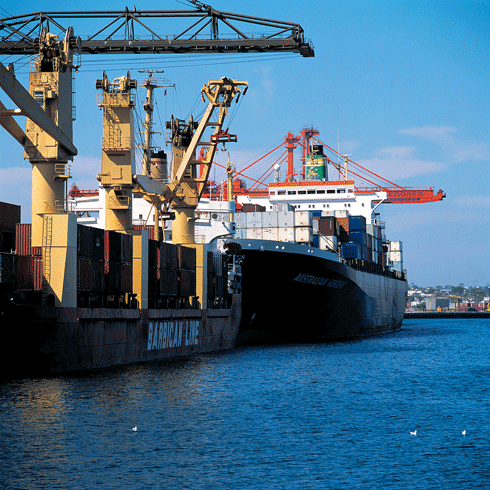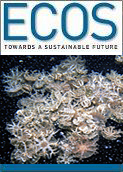
|
Published: 10 September 2012
Smog trailing ships at sea
Ship engine exhaust emissions make up more than a quarter of nitrogen oxide emissions generated in the Australian region according to a recently published study by CSIRO and the Australian Maritime College in Launceston.The remaining emissions come from road and air transport, energy generation, and industrial processes.

|
|
A container vessel being loaded at the Port of Fremantle, WA. Credit:
CSIRO
|
Nitrogen is oxide not a greenhouse gas, unlike the similarly named, but chemically different, nitrous oxide. It is, however, a common ingredient of smog.
Global studies indicate that shipping emissions of nitrogen oxide and sulphur contribute to the formation of photochemical smog and particles near land and in ports.
The study’s authors, Dr Ian Galbally from CSIRO Marine and Atmospheric Research, and the Australian Maritime College’s Dr Laurie Goldsworthy, estimate that around 30 per cent of nitrogen oxide emissions and 20 per cent of oxides of sulphur emissions generated by human activity in the Australian region may come from shipping.
Although they are not greenhouse gases, they have the potential to affect the air quality near coastal regions, and thus have consequences for human health and amenity.
Dr Galbally said around 10 per cent of global shipping freight passes through Australian ports annually. ‘Shipping is a major driver in the Australian economy, with 753 megatonnes of international exports worth AU$202 billion passing through Australian ports in 2008-2009.’
‘There is limited knowledge about the emissions from ships in coastal regions and ports in Australia, the effects of these emissions on air quality in the surrounding coastal and portside urban regions, or potential effects on human health,’ he said.
The ports of Perth, Melbourne, Sydney and Brisbane are located where seasonally prevailing onshore winds dominate; pollutants from shipping frequently will be carried into the air-sheds of these major urban population centres.
‘We’re seeing increasing regulation of land-based emissions but limited regulation of shipping emissions and expect that in the near-future there will be a need to monitor more closely emissions from shipping,’ Dr Galbally said.
The authors commenced this study with measurements of ship exhaust emissions on the coastal cement carrier MV Goliath.
Dr Goldsworthy said it is possible to quantify emissions generated based on knowledge of fuel type, fuel origin, engine size, cargo, and speed.
‘We know from previous studies and the Australian Pollutant Inventory that ship emissions off the coast of Australia are substantially larger than in-port ship emissions.’
‘Nitrogen oxide and sulphur oxide emissions at sea are comparable in magnitude with other national sources such as energy generation and industry. They are potentially significant contributors to the air-sheds of major coastal cities,’ he said.
Source: CSIRO



